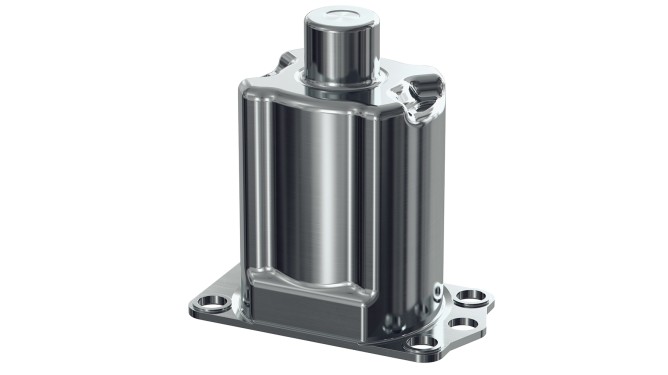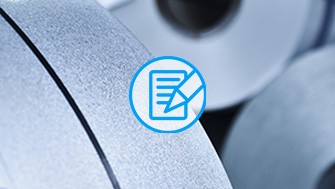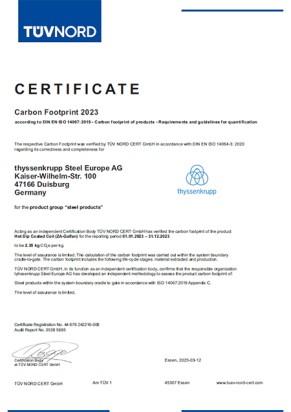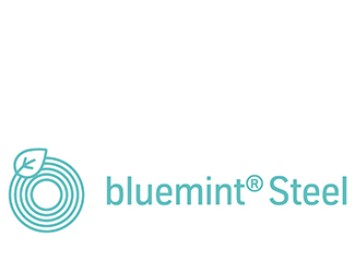Find out more: bluemint-steel.com
Ideal for processing
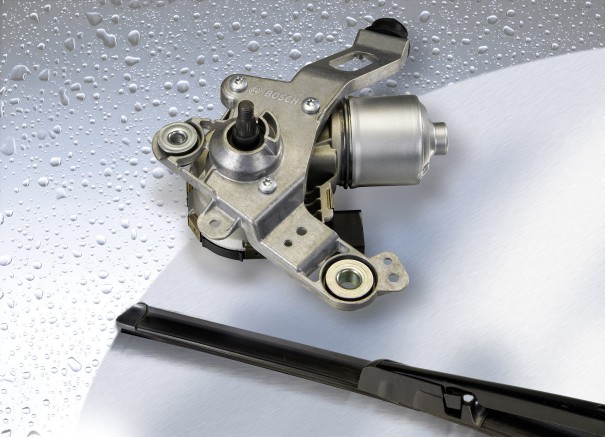
An additional feature is that the intermetallic phase between the steel substrate and the coating is either very thin or absent completely, giving galfan® excellent forming properties. Thus it is ideal for complicated shapes with tight radii.
Available steel grades
Deep-drawing steel
DIN EN 10346
| SURFACE FINISHING | |
|---|---|
| Steel grade | ZA |
| DX51D | |
| DX52D | |
| DX53D | |
| DX54D | |
| DX56D |
Hot-dip coated structural steel
DIN EN 10346
| SURFACE FINISHING | |
|---|---|
| Steel grade | ZA |
| S220GD |
|
| S250GD |
|
| S280GD |
|
| S320GD |
|
| S350GD |
|
| S390GD | |
| S420GD | |
| S450GD |
High-strength IF steel
DIN EN 10346
| SURFACE FINISHING | |
|---|---|
| Steel grade | ZA |
| HC220Y / HX220YD |
Micro-alloyed steel
DIN EN 10346
| SURFACE FINISHING | |
|---|---|
| Steel grade | ZA |
| HC260LA / HX260LAD | |
| HC300LA / HX300LAD | |
| HC340LA / HX340LAD | |
| HC380LA / HX380LAD |
|
| HC420LA / HX420LAD |
Serial production
On request
Tolerances
Dimensional and shape tolerances to EN 10 143.
Surfaces
Available surface finishes, hot-dip coated
| Minimum coating two-sided sample [g/m2] | Auflage je Seite an Einflächenprobe [μm] | ||||
|---|---|---|---|---|---|
| Coating | Specification | Triple spot sample | Single spot sample | Thickness1 | Typicl thickness |
| ZA95 | DIN EN 10346 | 95 | 80 | 5 – 12 | 7 |
| ZA130 | DIN EN 10346 | 130 | 110 | 7 – 15 | 10 |
| ZA185 | DIN EN 10346 | 185 | 150 | 10 – 20 | 14 |
| ZA200 | DIN EN 10346 | 200 | 170 | 11 – 21 | 15 |
| ZA255 | DIN EN 10346 | 255 | 215 | 15 – 27 | 20 |
| ZA300 | DIN EN 10346 | 300 | 255 | 17 – 31 | 23 |
Coating process
As with hot-dip galvanized sheet, galfan® zinc-aluminum coated sheet is produced in a continuous process (furnace, metal bath).
Type of surfaces
Zinc-aluminum coated sheet galfan® is available in three surface finishes: A (Normal surface), B (Improved surface), C (Best surface) to DIN EN 10346.
Surface treatments
The following surface treatments are available: Without surface treatment1 (U), Passivated (C), Chemically passivated and oiled1 (CO), Oiled (O) , and Sealed (S).
Roughness
It is possible to set a specific roughness by prior arrangement.
Painting
galfan® offers good paint adhesion and is particularly suitable for organic coating. In general, all known organic coating methods can be used. In the painted condition galfan® offers particularly high corrosion protection.
1 On request
Processing of galfan® coated steel
Forming
All common forming processes used for cold-rolled sheet can be used for galfan® sheets if die geometry and surface are adapted accordingly. The type of zinc coating in conjunction with the surface topography has a decisive influence on the tribology of the forming process.
The characteristic parameter is the coefficient of friction μ. At thyssenkrupp Steel the coefficient of friction is determined in the strip drawing test between plane parallel tools. The scatter band results from the different oil coating weights and the roughness spectrum. When changing over from a different surface finish (coating) to zinc-aluminum coated sheet, the blank shape, blankholder forces or the geometry of the drawing bead may have to be adapted to the flow behavior of the material in the flange area.
To avoid coating abrasion, the die surface in the region of the blankholder, drawing beads and drawing radii must be completely smooth. Finishing of the die surfaces must be carried out in the flow direction of the material. Weld repairs must be finished carefully. As a guide, Rz values of approx. 1.6 μm (corresponding to Ra of approx. 0.15 μm) should be targeted. In addition the die surfaces should be hardened or plasma-nitrided to reduce susceptibility to adhesion.
With simple forming operations sealed surfaces can be formed dry if the active die surfaces are suitably polished.
Processing instructions for joining
All thermal and mechanical joining techniques can be used, as can adhesive bonding and sealing. However, the particular properties of the galfan® coating ZA require the processing parameters for some joining techniques to be adapted. Joining techniques which do not impair the surface, i.e. which preserve the anticorrosion properties of the coating, such as clinching and adhesive bonding are gaining in importance.
The preferred welding processes are resistance spot welding, projection welding and seam welding. These processes are easy to automate, cause little surface damage or component distortion and do not require weld fillers. It should be noted that, compared with uncoated cold-rolled sheet, a higher welding current is needed due to the lower contact resistance caused by the coating and the required higher electrode force.
The electrodes must be cooled intensively, as there is a strong tendency to electrode pick-up with the galfan® coating. With the CuCrZr electrodes used for preference in resistance spot welding, high electrode lifetimes can be achieved without remilling by stepper control of the welding current. In seam welding, electrode pick-up necessitates frequent cleaning of the rollers. Projection welding can be used with galfan® without any problems, provided the projection geometry and welding parameters are kept constant within close limits.
The laser beam, metal active gas (MAG), and tungsten inert gas/plasma gas (TIG/plasma) welding methods commonly used for uncoated cold-rolled sheet can also be used for galfan®. However, when welding lap joints, particularly with metal active gas welding, porosity must be expected.
A great alternative is arc brazing (MIG/plasma/TIG brazing) using copper braze alloys and flanged or lap joints.
As the coating burns in the weld and corrosion protection is thus reduced in this area, processes should be preferred which introduce relatively low levels of heat into the part to be welded. A slower welding speed than that used with cold-rolled sheet improves degassing of the weld pool and avoids the formation of pores. The best results are achieved with butt joints.
When welding galfan®, welding fumes are unavoidable. The amount of fumes depends on factors such as the coating thickness and the welding process. In general, good workplace ventilation is recommended, in certain cases direct extraction of the welding fumes is advised.
